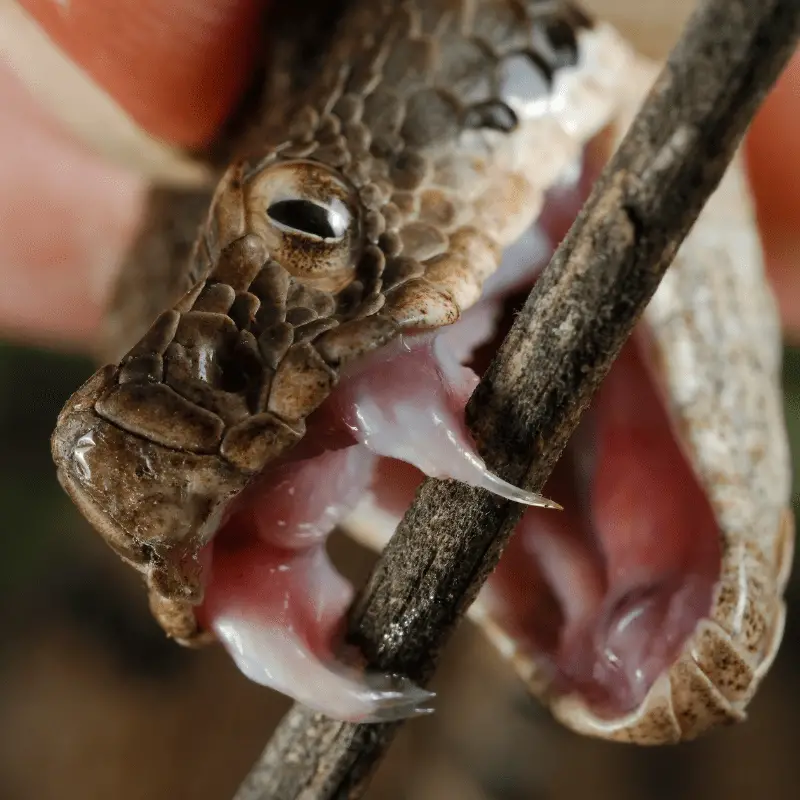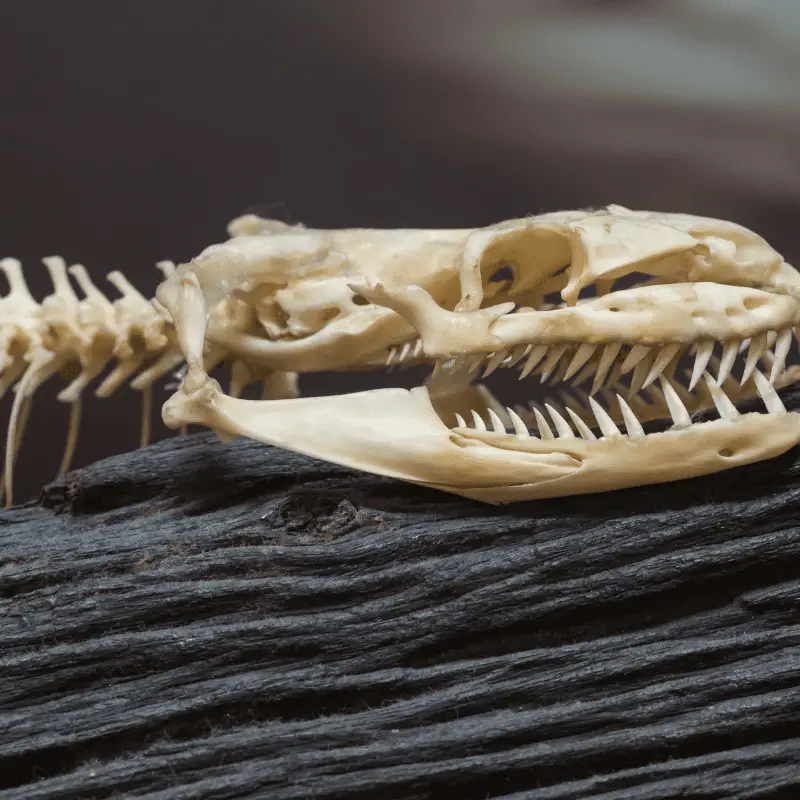Except for a handful of places, you can find snakes everywhere in this world. There are more than three thousand different snake species around the world. However, not all of them are venomous. Even though we fear snakes mostly for their deadly venom, most of the venomous snakes are not fatal for humans.
The venomous snakes mostly use their venom to catch their prey. The non-venomous snakes, on the other hand, constrict their prey to death or swallow them alive. Irrespective of their types, almost all snakes eat their food as a whole. Why do they do that? Don’t snakes have any teeth except the fangs?
Most of the snakes species do have teeth. The snakes use their teeth for catching their prey and while eating. All snakes do not have fangs. Only the venomous snakes have fangs. It allows them to deliver the poison into the bloodstream of the victim. Except for the fangs, almost every snake has two rows of teeth on its top jaw and two on the bottom ones.
The funny thing is, when it comes to the teeth, the snakes can grow as many of them as they like. The reason is, most of the time, snakes will lose a couple of teeth while catching their prey or while feeding. So, the teeth growing ability helps them catch and feed on their prey without any issues throughout their life.
How many teeth do snakes have?
It is hard to know the number of teeth a snake have in their mouth as they are all different. The number of teeth can range from twelve to a few hundred, depending on the species of snake. However, the snakes have teeth arranged in rows inside of the snakes’ mouth. Most of the snakes have six rows of teeth. On each side of the lower jaw, they have one row of teeth. In the upper jaws, the snakes have two rows of teeth on each side.
What are the snake fangs?

Fangs are enlarged and elongated teeth that are positioned at the upper jaw of the snake’s mouth. Only the poisonous snakes have these fangs in their upper jaw. That being said, the fangs of most poisonous snakes are positioned in the rear side of their mouths. However, the snakes, like vipers and cobras, have fangs right in front of their mouth.
The fangs are a modified version of the maxillary teeth of the snakes. Depending on the structure and the position of the teeth and fangs, all snakes can be categorised into four different types.
Aglyph (Do Not Have Grooves)
These snakes have the most primitive settings of the teeth. They have solid teeth without any fangs. Some of the most well-known snakes fall into these categories. For example, snakes, like pythons and Boas, fall in this category. Other than that, the primitive blind snakes and the Colubridae family’s snakes sport these teeth settings. Most of the snakes that showcase this kind of teeth setting are non-venomous. While a couple of aglyphous snakes have venom, it is non-lethal to humans.
Opisthoglyphous (Rear Side Grooves)
The snakes that fall on this group are all venomous. They have fangs which they use to push poison into the bodies of their prey or the attackers. In this type of teeth setting, the fangs are situated at the rear end of the maxilla. That makes the fangs grooved and backwards positioned. That means the toxins can be canalised to the tip of the fang. It allows the snakes to inject the venom into their prey while moving it to the deep end of its mouth. This teeth setting can be found in some of the large snakes of the Colubridae family.
Fangs of these snakes are situated at the back of their jaw. That is why most of these snakes are not that harmful to humans. However, the exception proves the rule. Some of the snakes belonging to this family, like the bird snakes and boomslang, are extremely venomous and dangerous to humans. Right now, no antitoxin has been developed against their strong haemotoxic poison.
Proteroglyphous (The Forward Grooved)
These snake species have big venomous fangs right in front of their mouth. Unlike the previous ones, these fangs are not that long. That means snakes with these kinds of fangs need to apply pressure while biting their prey or victims to ensure that the venom can get inside their prey.
This teeth setting is mainly seen in the Elapidae family’s snakes, including the sea snakes and cobras. The snakes belonging to this family are some of the most poisonous snakes across the world. These snakes use neurotoxins to paralyse their predators or prey.
Solenoglyphous (Pipe Groove)
This teeth formation is the most developed one. It is generally found in the snakes of the Viperidae family. The maxilla of these snakes is small and offers support to the pair of elongated hollow fangs. The fangs of this class’s snakes are so long that they take up almost half of the skull.
These snakes keep the fangs folded against the roof of their mouths. However, the fangs can get articulated with the rest of the cranium when the snakes open their mouth to bite the prey.
This feature enables this family’s snakes, like the vipers, to penetrate their fangs deep within their prey to inject a substantial amount of venom. Even though these snakes’ venom is not as potent as the others, it can still be lethal in large dosages.
Do baby snakes have teeth?

Yes, they do have teeth, a baby tooth that plays an important role during the birthing process. While most of the snakes lay eggs, some of them, like rattlesnakes, Boas, and garter snakes, give birth to live babies. However, during the delivery, the babies are generally covered with a thin membrane-like baggie. The baby snake uses its egg tooth to rip that bag open to come outside. The same thing happens for the snakes that lay eggs. While hatching, the baby snakes use their egg tooth to tear open the eggshells. However, this baby tooth does not last for long.
Can snake teeth be removed?
Yes. You can remove the teeth of the snakes. However, the teeth will keep on growing back on their own. Removing the tooth of venomous snakes is still a common practice in many places in the world. However, the removal procedure is painful for the snakes. So, removing the teeth should be avoided unless it is a medical emergency.
Conclusion
While most people choose non-venomous snakes as their pets, some people like to keep venomous ones. If you are one of them, do not indulge in the practice of removing the tooth of your pet snake. Instead, talk to your vet for understanding the procedure of venom removal. Keeping a snake as a pet is not an easy thing. Understand this first, and keep in constant touch with your vet. It is the only way to keep your pet snake happy and healthy.

